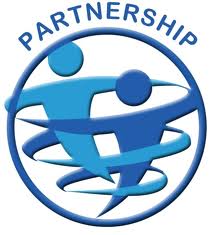 An old childhood friend of mine reached out to me this morning with an interesting question:
An old childhood friend of mine reached out to me this morning with an interesting question:
“Do you think there is a conflict with a non-profit’s status if they contract with a for-profit company to manage the organization?”
She asked this question because her company is starting to investigate the possibility of offering a service whereby it would get into this line of work. So, I promised that 1) I would do a little research on the subject and 2) pose the question to subscribers of this blog to get your thoughts. While I will share some of my thoughts below, please use the comment box to weigh-in.
As I swirled this question around in my head, I ultimately came to the conclusion that my answer is “I don’t advise it, but IT DEPENDS“.
- The IRS is very specific about 501(c)(3) organizations needing to focus their efforts on the “greater good”. I can see potential conflicts in a relationship like this because the main focus of a for-profit corporation is “profit;” whereas, the main focus of a non-profit organization is achieving its “mission“. While not necessarily mutually exclusive, I do worry about the potential for conflict when making management decisions. I can see many different kinds of decisions pertaining to managing money and raising funds that could create conflicts of interest.
- I’ve seen it way too often where non-profit boards develop a feeling of hopelessness and want to abdicate their fiduciary responsibilities to anyone who they think can fix their dysfunction. In situations like this, contracting management of the agency to a for-profit corporation might be a recipe for disaster. In my opinion, partnering with a for-profit organization requires a highly engaged non-profit board of directors who can and will provide more direction and oversight to their for-profit partners than they might otherwise have done for an Executive Director and agency staff.
- The resource development and fundraising functions of a non-profit organization are complex and not something that makes much sense to many for-profit leaders. Cultivating & stewarding donor relationships as well as raising money isn’t as easy as hosting an event or writing a grant. It is a comprehensive program that requires knowledgable staff and engaged & committed board volunteers. A non-profit board cannot wash its hands of its resource development responsibilities and expect its for-profit partners to make it rain money. I also wonder how many donors might view such a partnership and how that might affect their financial support?
- Board development is very different for non-profits compared to for-profit corporations. In the non-profit world, there can be no compensation for sitting on a board. Additionally, it appears to me that the process of identification, recruitment, orientation, recognition and annual evaluation has a different feel for non-profits compared to corporate boards. While board development is the responsibility of board volunteers, it typically evolves into a partnership between board and the executive director (with staff providing support and expertise). I can see many conflicts around this governance function when non-profits and for-profits partner around agency management.
In a nutshell, I am skeptical about any board turning complete and total management control of its non-profit agency’s management over to a for-profit company. However, I can see a non-profit board contracting with a for-profit corporation for specific management services, such as:
- executive search
- temporary staffing
- accounting and payroll
- marketing
- market research & feasibility studies
- facilitating planning processes (e.g. strategic planning, business plans, etc)
- general consulting work around any number of topics
However, even in these circumstances, I don’t think it is wise for a non-profit board or Executive Director to contract out any back office function in a way that feels like they are “washing their hands” of their responsibilities. Significant oversight is required in these circumstances. If this oversight isn’t possible, then the partnership shouldn’t be consummated. Additionally, these arrangements should be spelled out in a contract (or a letter of agreement) that also clearly identifies potential conflicts of interest and indicates how they will be handled.
The one final thought I cannot get my head around is the idea of “non-profit receivership”. What if a board and staff are so dysfunctional, know it, don’t want to dissolve the agency, but they all agree to quit and give the organization a ‘new start’ . . . can they do so by temporarily (and contractually) putting their agency into a state of receivership with a for-profit organization? I suspect it cannot legally be done without a board of directors in place providing intense direction. I also suspect that receivership might best be done with another non-profit organization playing the role of “receiver”.
What are your thoughts on my friend’s question? I know we have some lawyers who subscribe to this blog . . . and I’d love to hear what they think. I know that my friend and her company will be monitoring this blog for comments to this post for the next day or two. PLEASE JUMP IN WITH YOUR OPINION. I suspect they will have to engage legal counsel to flesh out many of these questions, but your input can help them frame that engagement with their legal counsel.
I will end today’s post by sharing some of the research I found when trying to respond to my friend’s answer:
- Partnership (Source: Wikipedia)
- How to Lose Your Tax-Exempt Status (Source: Joanne Fritz of about.com)
- The Nonprofit Paradox: For-Profit Business Models in the Third Sector (Source: The International Journal of Not-for-Profit Law)
- L3C – Low-profit Limited Liability Company (Source: Nonprofit Law Blog)
Here is to your health! (Sorry for the long post . . . this is a complex topic)
Erik Anderson Owner, The Healthy Non-Profit LLC eanderson847@gmail.com http://twitter.com/#!/eanderson847 http://www.facebook.com/eanderson847 http://www.linkedin.com/in/erikanderson847





